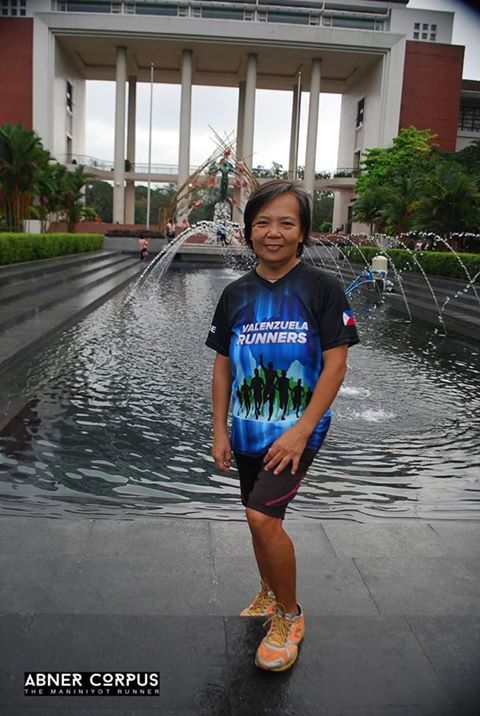Living in the Philippines with Diabetes
Written by: Beyond Type 2 Editorial Team
3 minute read
February 13, 2020
Sofia Evangelista has been living with diabetes in the Philippines since 2003. Even though she's experienced eye complications from diabetes, she's kept her goal of living healthy in sight.
Sofia Evangelista has been living with diabetes in the Philippines since 2003. Even though she’s experienced eye complications from diabetes, she’s kept her goal of living healthy in sight. She talked to Beyond Type 2 about her journey and gave us some insight into diabetes care in her country from a patient’s perspective.
When were you diagnosed with diabetes? Did you experience any of the usual symptoms?
I was diagnosed with type 2 diabetes on May 18, 2003. I’ve experienced all the symptoms. I was always thirsty, frequently using the bathroom, a yeast infection, my vision was blurry and I was always hungry. I would eat and then an hour or two later, I was hungry again. It was also tough to sleep at night at times.
What was your reaction? Were you surprised?
I was shocked. I didn’t think the symptoms I was experiencing were due to diabetes. No one in my family has it, plus, I didn’t think I was doing anything extraordinary to lead me to this kind of illness.
What were you and your doctor’s first plan of action—what medicine were you put on?
At the time of my diagnosis, my blood sugar was 20.8 mmol/L375 mg/dL. My doctor told me to have some lab tests done so he could see if I’d started to develop any diabetes-related complications in my heart, liver and kidneys. After, I was given oral medication such as metformin to take in the morning and glimepiride in the evening. Other than seeing my doctor twice a year, I had to begin seeing an ophthalmologist due to nerve damage in my eyes from long-term high blood glucose levels.
What kind of support did you find to help you manage type 2?
Since there’s no one in my family with diabetes, I thought it was my fault I got it. I ate too much like there was no tomorrow. My family didn’t know anything about the disease and there was no other way to get information about it. Unlike now, there was no quick info to look on my cell phone, no extra gadgets or only support groups through social media.
What was your diet like before and after your diagnosis?
My diet was bad. I ate anything—lots of rice, drank a lot of soft drinks at lunch, over-snacking, chocolate, meat. I’m not big on vegetables, either. Did I change my eating habits? No, because it was okay for me to eat the same amount of food as long as I took my medicine. My doctor warned me to limit my food intake. However, I didn’t listen until I started to develop eye complications. That was my wake-up call. That’s when I started to change.
Tell us about diabetes care in the Philippines. What’s accessible to you? What’s hard to get? Is it difficult to see a specialist?
Health care in the Philippines isn’t that good, especially for people with diabetes and unlike for other illnesses, like cancer. In government hospitals, you can have free consultations, but the medications aren’t free. Once in a while, you can get free insulin but not all the time. It’s difficult to see a specialist here because their consultation fees are high.
Are there any cultural traditions in food, health, wellness and medicine that influence diabetes management in your country?
There aren’t many traditions in term of wellness, food, health and medicine that affects diabetes care in the Philippines. Some people rely on herbal medicines like bitter gourd and moringa to treat their diabetes and attempt to cure it, even though there’s no evidence it will actually cure it. Also when it comes to wellness, in previous years exercise wasn’t valued or given any kind of importance in my society. Now with the help of social media and support groups, awareness about the importance of eating healthy food and being physically active are spread.
What are some misconceptions about type 2 diabetes people have?
Some of the misconceptions about type 2 diabetes are that you can no longer have an active life and that you’re weak. People also wrongly mistake that you can’t eat whatever you like in moderation. Another thing is that when you have diabetes, people think it’s your fault because you eat too much sugar. Those are things I always hear.
Finally, what are some words of empowerment you have for our audience? How do you live #BeyondPowerful with Diabetes?
All I can say is live life to the fullest. It’s okay to have diabetes as long as we know how to control it and not let diabetes control us. Try something new that will make your lives happier and meaningful to yourself and others. Join a sports group in your community. For example, I’m into running and it helps me a lot with my anxiety and overall health. And lastly, find a support group that can help you understand diabetes. It’s nice to talk to other people with some understanding of what we’re dealing with.

Author
Beyond Type 2 Editorial Team
This piece was authored collaboratively by the Beyond Type 2 Editorial Team.
Related Resources

Michael Costa’s running journey began with the desire to improve his health and better manage...
Read more

Jordan Sooter’s journey to running marathons began in college as a way to stay fit....
Read more

Antoine Gibson is no stranger to overcoming challenges. As a saxophonist and marathon runner living...
Read more

